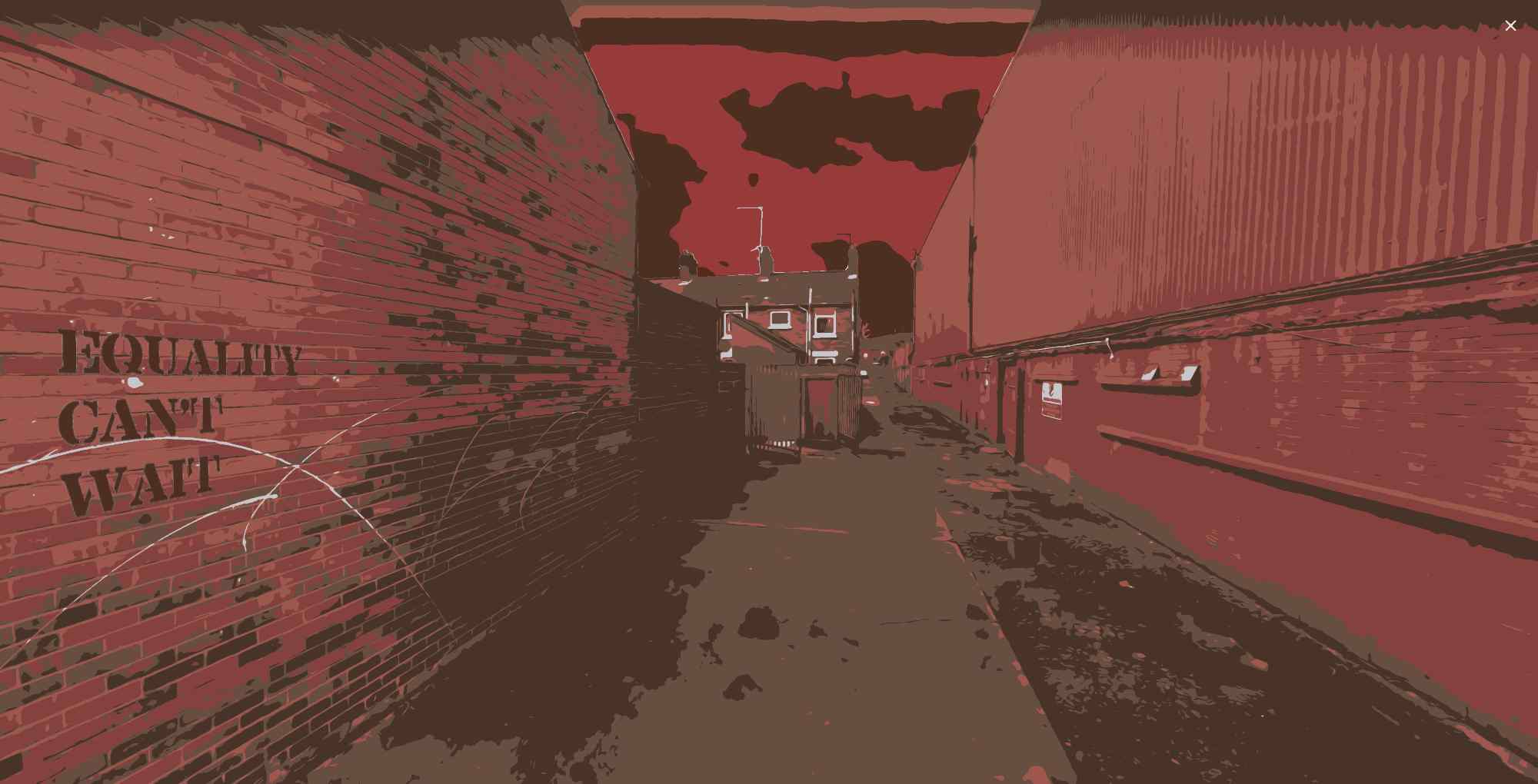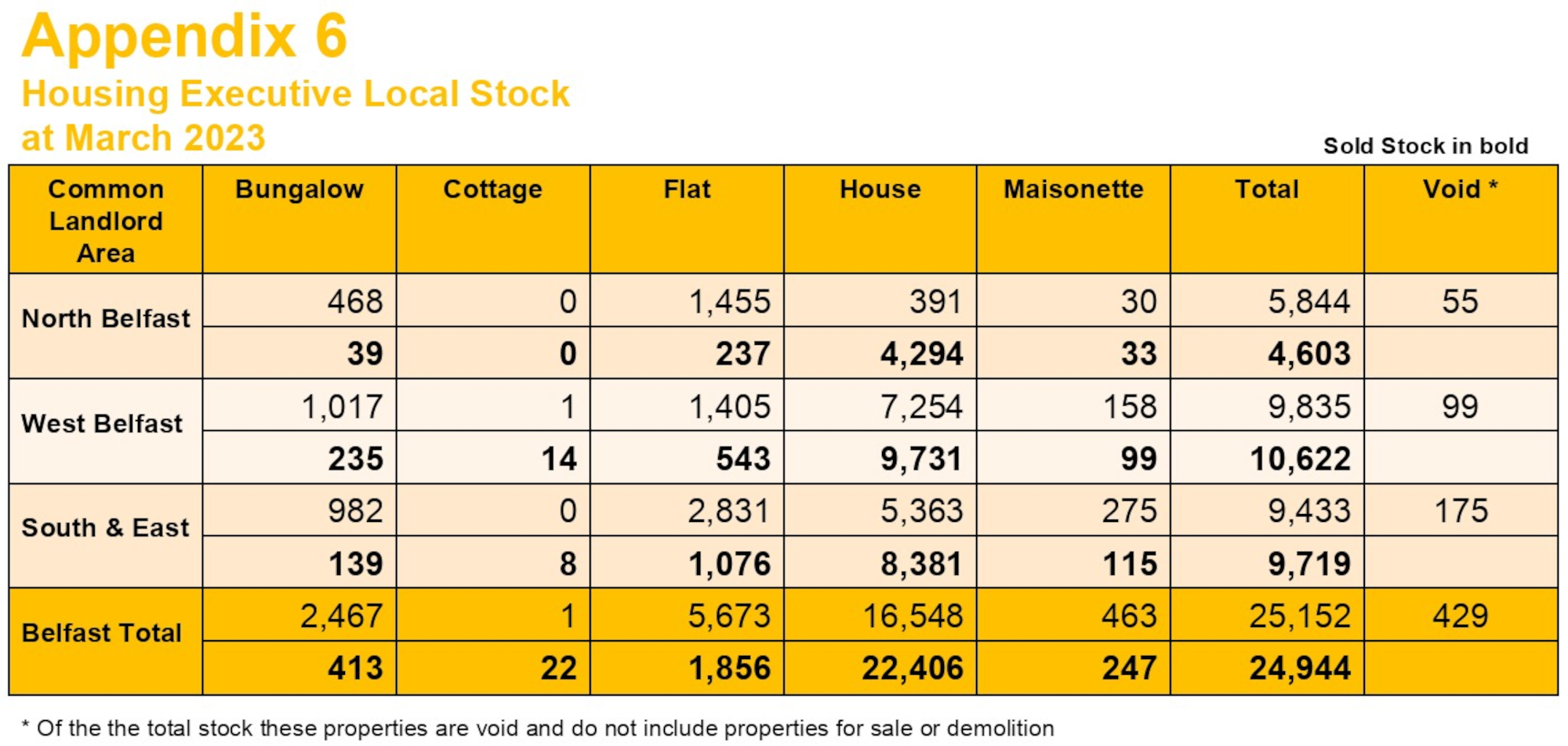
Policy Watch
An eye on policy changes in Ireland, the UK and beyond
Understanding Social Housing Statistics: voids
According to the housing statistics published by the Department for Communities (DFC) in December 2023, around 118,650 NI households live in social housing (table 6.5, which uses 2016 figures). The data (table 1.3) also indicated that in 2022-23, 10% of all NI households rented their social homes from the Housing Executive, while another 4% rented from housing associations (HAs).
‘Voids’ are social homes that are “untenanted for a period of time” (DFC Housing Association Guide). The Housing Executive says it takes voids amongst its own properties into account when calculating housing need in any given area, but that it does not track housing association voids or include them in its assessments.
Housing Executive voids
In April 2019, Housing Executive voids were 0.24% of its total Belfast stock (Belfast Housing Investment Plan 2019-2023 p. 33). It committed to developing a new Voids Action Plan to “maintain voids below 1% of total stock to make best use of housing stock and increase revenue from rents”.
As a result of the Covid-19 pandemic, work on the voids action plan was suspended; as at March 2023 Housing Executive voids had risen to 1.37% of total Belfast stock (Belfast Housing Investment Plan 2023-2026 p. 75). The data was given by general location as follows (p. 99. note the sum of the void column doesn’t match the ‘Belfast total’).

Housing Association voids
The DFC’s Housing Association Guide includes parameters for managing voids amongst a housing association’s lettable properties. It says that “No more than 4% of an Association’s total stock should be void.”
Housing associations report annually to the DFC and the reports are available on the DFC’s website. Around fifteen housing associations build in Belfast (though the data is not broken down geographically – so for housing associations that also build elsewhere, the figures include units outside Belfast as well).
In their annual reporting, housing associations appear to report this as ‘charges not collected’. Of those working in Belfast, three (Alpha, Clanmil and Woodvale & Shankill) apparently failed to meet the DFC’s 4% target in their last reporting year (for most, 2021-22).
Another statistic included in the annual reporting is the average number of days it takes to fill voids. From the reports, North Belfast HA is the fastest of the Belfast HAs at filling voids – on average taking six days. Connswater HA is next, with seven days. Woodvale & Shankill HA reported an average of 147 days to fill voids. Of the larger housing associations, Choice has an average of 60 days to fill voids, Radius 113 days. Clanmil HA logged the highest average, at 222 days. The data indicated that Clanmil stock includes some long running voids (though it pre-dated this spring’s reports of intimidation and violence resulting in empty properties in one particular development).
With regard to duration of voids, housing associations send the DFC a breakdown of how long voids have lasted (categories are less than six weeks; between six weeks and six months; between six months and one year; over one year).
Amongst housing associations working in Belfast (though, as mentioned above, it is not clear from the data where in NI these ‘lettable voids’ were located exactly), 30 shared units and 48 self contained units were logged as void for more than one year. Similarly, 33 shared units and 57 self contained units were reported as void for a period of between six months and one year.
